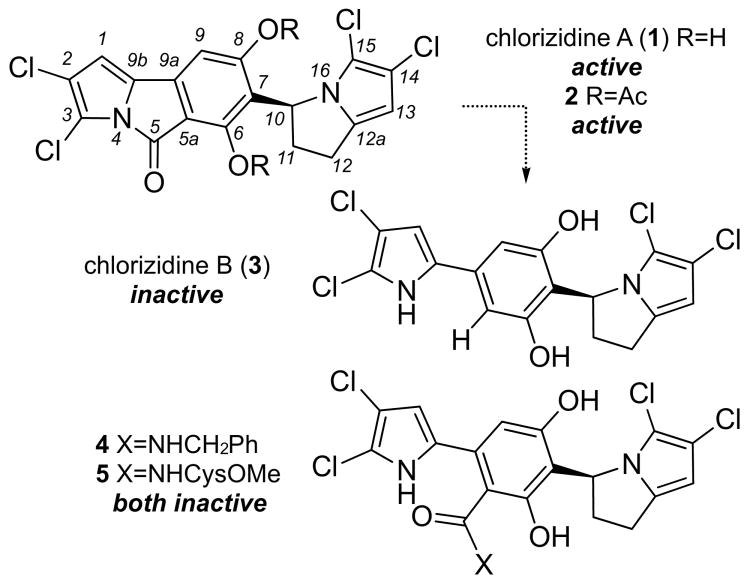Scheme 1.
Structures of chlorizidine A (1), chlorizidine A bis-acetate (2), chlorizidine B (3) and adducts 4-5. Conversion of 1 to an inactive congener 3 arose by hydrolysis followed by decarboxylation. In addition, nucleophiles readily added to 1 resulting in adducts such as 4 or 5 that also displayed a loss of activity in HCT-116 cells.[4]

